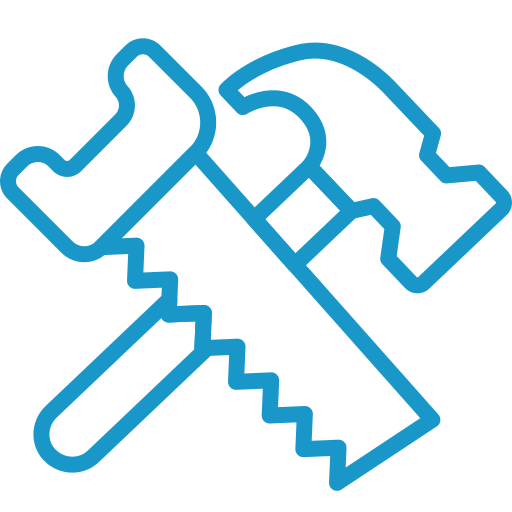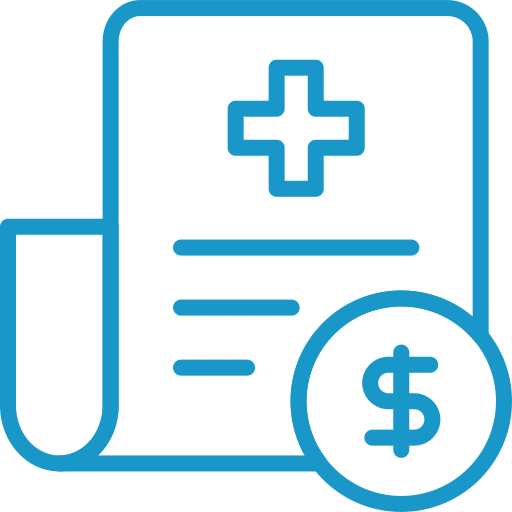Non-Surgical Fat Removal Financing
Get pre-qualified for a personal loan in just minutes. Checking rates won’t affect your credit score







Non-Surgical Fat Removal Loan Options
We all struggle with our weight, especially as we age. While dedicated time in the gym and discipline in the kitchen can shed many of those extra pounds, it’s a lot of work, slow going, and there are some stubborn fat areas our bodies just don’t want to let go of. To cut down the time it takes to get the results you want or to finally get the body you deserve, non-surgical fat removal can be the answer. You should never look for budget options when it comes to cosmetic procedures, and so you may need to seek non-surgical fat removal financing to afford your treatment.
Applying for non surgical fat removal financing is fast and easy:
Compare personal loan rates
Compare personal loan rates in April, 2025
Can fat be removed without surgery?
Yes, there are non-surgical options available for reducing fat in certain cases. While they may not provide the same level of fat reduction as surgical procedures like liposuction, they can be alternatives for individuals who prefer non-invasive or non-surgical approaches. Here are some non-surgical fat reduction methods:
- Cryolipolysis (CoolSculpting): This technique freezes and destroys fat cells using controlled cooling. It is a non-invasive procedure that can target specific areas, such as the abdomen, thighs, or flanks. The body naturally eliminates the destroyed fat cells over time.
- Laser Lipolysis (Laser Fat Reduction): Laser devices can be used to heat and liquefy fat cells, which are then naturally eliminated by the body. This non-surgical procedure is typically performed using local anesthesia and involves minimal downtime.
- Radiofrequency Fat Reduction: Radiofrequency energy is used to heat and destroy fat cells, leading to their gradual elimination. This procedure can help tighten the skin in addition to reducing fat.
- Injectable Treatments: Certain injectable treatments, such as Kybella, can target and reduce fat in specific areas. Kybella is FDA-approved for reducing submental fat, commonly known as a "double chin."
What is non-surgical fat removal financing?
Non-surgical fat removal financing refers to the financing options available to individuals who wish to undergo non-surgical procedures for fat reduction but require financial assistance to cover the associated costs. These financing options are specifically tailored to help individuals manage the expenses related to non-surgical fat removal treatments.
Just like financing options for other medical procedures, non-surgical fat removal financing allows you to break down the total cost of the treatment into manageable monthly payments. This can be particularly beneficial for individuals who may not have the funds readily available to pay for the procedure upfront.
Non-surgical fat removal financing options can be offered by various sources, such as specialized medical financing companies, healthcare credit providers, or through financing plans provided directly by the clinic or medical facility offering the treatment. These financing options may involve interest rates, fees, and repayment terms, which can vary depending on the financing provider and your creditworthiness.
How does non-surgical fat removal financing work?
Non-surgical fat removal financing works similarly to other types of medical financing. Here's a general overview of how it typically works:
- Research and Choose a Provider: Research different financing options available to you. This can include specialized medical financing companies, healthcare credit providers, or financing plans offered by the clinic or medical facility providing the non-surgical fat removal treatment.
- Application Process: Begin the application process by completing the necessary forms and providing the required information. This may include personal details, financial information, and consent for a credit check. Some financing providers offer online applications for convenience.
- Credit Evaluation: The financing provider will assess your creditworthiness based on the information provided. They will review factors such as your credit score, income, employment history, and debt-to-income ratio to determine your eligibility for financing and to establish the terms of the loan.
- Loan Approval and Terms: If your application is approved, you will receive information regarding the loan amount, interest rate, repayment terms, and any associated fees. Review the terms carefully and ensure you understand the total cost of financing, including any interest charges or administrative fees.
- Loan Acceptance: Once you accept the loan offer and agree to the terms, you will typically sign a loan agreement or financing contract. This document outlines the responsibilities and obligations of both parties involved.
- Treatment Payment: The financing provider will typically pay the approved loan amount directly to the clinic or medical facility providing the non-surgical fat removal treatment. The payment is usually made upfront or according to a predetermined payment schedule.
- Repayment: You will be responsible for repaying the financed amount to the provider according to the agreed-upon terms. This typically involves making monthly payments over a specific period. Payments may include both the principal amount borrowed and any applicable interest charges.
How much does non-surgical fat removal cost?
The cost of non-surgical fat removal procedures can vary depending on several factors, including the type of procedure, the area being treated, the geographic location, the clinic or provider, and other associated factors. It's important to note that the following cost ranges are approximate and can vary significantly:
- Cryolipolysis (CoolSculpting): The cost of CoolSculpting treatments typically ranges from $1,500 to $4,000 per treatment session. The total cost depends on the number of treatment areas and the number of sessions required to achieve the desired results.
- Laser Lipolysis (Laser Fat Reduction): The cost of laser lipolysis treatments can vary widely, ranging from $1,500 to $5,000 or more per treatment session. Factors such as the treatment area size, the number of areas being treated, and the expertise of the provider can influence the cost.
- Radiofrequency Fat Reduction: The cost of radiofrequency fat reduction treatments can range from $1,500 to $4,000 per treatment session. The total cost depends on factors such as the treatment area(s), the number of sessions needed, and the specific radiofrequency device used.
- Injectable Treatments (e.g., Kybella): The cost of injectable treatments for fat reduction, such as Kybella, can range from $1,000 to $2,000 per treatment session. The total cost varies depending on the number of sessions required and the amount of product needed.
What is the safest non-surgical fat removal procedure?
Non-surgical fat removal procedures can offer a safer alternative to surgical methods. Some commonly used non-surgical procedures include cryolipolysis (CoolSculpting), laser lipolysis, radiofrequency fat reduction, and injectable treatments like Kybella. These procedures are generally considered safe when performed by qualified professionals. CoolSculpting, in particular, has a good safety record, being FDA-approved and widely used. Laser lipolysis, radiofrequency fat reduction, and injectable treatments also have minimal risks and side effects. However, it's important to consult with a qualified provider to discuss individual considerations and potential risks.
What kind of results can I expect from non-invasive fat removal?
This does vary from patient to patient and most find that they need multiple treatments to achieve their desired (more dramatic) results. Unlike liposuction, non-invasive fat removal has limited ability to sculpt the body, so you’re simply reducing your fat by a percentage your surgeon or practitioner can estimate for you. It is best used to reduce fat in stubborn areas, such as a double chin, belly bulge, love handles, saddlebags, thighs, and any areas with cellulite.
How can I finance non-surgical fat removal?
Here are the most popular options for financing non-invasive fat removal:
- Savings: A single non-surgical fat removal procedure is usually relatively affordable, and so it is often a good idea to look to your savings first. If you plan to have multiple treatments, you may need to liquidate some assets to afford it, where possible. Make sure you are aware of the results you’ll get with a non-invasive procedure compared to liposuction and make sure you’re making the most time and cost-effective decision for you.
- Credit Cards: Credit cards can also be a good way to cover the cost of one or two treatments, provided you have a good enough credit score to get a card with a good introductory offer. Look at cards offering long 0% APR terms or long low-interest introductory offers.
- Personal Loans: a personal loan is one of the best choices if you plan to have multiple treatments or want to spread the cost of your treatment over a longer term. How much you can borrow depends on your creditworthiness, but most won’t lend less than $1,000 - $5,000. See our “Best Non-Surgical Fat Removal Personal Loans” section below for those that offer smaller amounts.
- HELOC: A Home Equity Line of Credit isn’t likely going to be the right option for non-surgical fat removal financing, unless you plan to have multiple procedures over time - in which case it may be the right choice. A line of credit works much like a credit card as you are given a credit limit and can borrow as you need up to that amount, and only pay interest on what you’ve used. These usually have higher amounts and lower interest because they are secured against the value of your home, but you should also keep in mind that they come with the risk of your home being seized if the worst was to happen.
- 401(k) Loan: If your retirement 401(k) plan allows you to take out a loan from your retirement balance, you can use it to pay for your procedure. Not all 401(k) plans allow this and they usually have strict repayment rules, but they are a good way to avoid credit checks and paying interest.
- In-House Financing: Most practices and cosmetic surgeons offer some form of in-house financing through a partner lender, so you can investigate their payment plans, if they’re offered. Make sure you compare them to external options to get the best rates.
Compare Offers

Ready to find the best loan for cosmetics & plastic surgery procedures? Get started!
Need help finding the right loan?
No worries, we've got you covered! Compare personalized loan options in just minutes.
How Pasha Funding Works

Pros & Cons of Non-Surgical Fat Removal Financing
PROS
- Affordable Payments: Financing allows you to break down the total cost of the procedure into affordable monthly payments. This can make the treatment more accessible and manageable, particularly for individuals who may not have the funds available to pay for it upfront.
- Immediate Access: Financing enables you to undergo the non-surgical fat removal procedure sooner rather than later. You can proceed with the treatment without having to delay it due to financial constraints, helping you achieve your desired results more quickly.
- Flexibility in Repayment: Non-surgical fat removal financing often comes with flexible repayment options. You can choose a repayment plan that suits your budget and financial situation, such as monthly installments or extended repayment terms.
- Preserves Savings: Opting for financing allows you to preserve your savings or emergency funds for other important expenses or unforeseen circumstances. You won't have to exhaust your savings entirely to cover the cost of the procedure, providing you with a financial safety net
CONS
- Additional Cost: Financing entails interest charges and potentially additional fees, which increase the overall cost of the procedure. It's important to consider the total amount you will be paying, including any interest, to ensure it aligns with your budget and financial goals.
- Debt Obligation: Taking on a financing arrangement means you are committing to repay the borrowed amount over time. It's essential to consider your financial stability and ability to meet the repayment obligations before entering into a financing agreement.
- Impact on Credit: Non-surgical fat removal financing involves a credit check and a potential impact on your credit score. Late or missed payments can further negatively affect your credit standing, so it's important to stay on top of your repayment schedule.
- Limited Coverage: Financing options may not be available for all non-surgical fat removal procedures or may have specific eligibility criteria. It's important to research and inquire about the availability of financing options for the specific procedure you are considering.
What credit score do you need to obtain non-surgical fat removal financing?
The credit score needed to obtain non-surgical fat removal financing varies among financing providers. Generally, a higher credit score increases the chances of approval. A good or excellent credit score indicates responsible credit management. However, it's important to research specific financing options and their credit requirements.
Can I get non-surgical fat removal financing with bad credit?
It’s likely possible, but it would be a much better decision to save for your treatment instead and focus on improving your credit score in the meantime. Don’t feel that you have to afford all your treatments at once - spacing them a few months apart as you save up will help you ensure you can maintain a healthy weight after your treatment.
How to Qualify for Non-Surgical Fat Removal Financing
To qualify for non-surgical fat removal financing, follow these steps:
- Check Eligibility: Ensure you meet the financing provider's requirements regarding age, residency, employment, and creditworthiness.
- Research Financing Options: Compare terms, interest rates, fees, and repayment options from different providers offering non-surgical fat removal loans.
- Assess Creditworthiness: Understand the credit criteria and work on improving your credit score if needed.
- Gather Financial Documentation: Prepare proof of income, bank statements, and identification documents for the application process.
- Complete the Application: Provide accurate information about employment, income, and debts in the financing application.
- Review and Accept Loan Offer: Carefully examine the loan offer, including the amount, interest rate, and repayment terms, before accepting.
- Sign the Agreement: Sign the loan agreement, confirming your commitment to repay the loan as agreed.
Cosmetic Financing Options
Breast
Body Lift
Male
Fat Reduction
Face & Neck
Personal Loans for Every Occasion
Find Your Best Rate
Compare Best Personal Loans
Personal Loan Payoff Calculator
Personal Loan Lender Reviews
Personal Loans By Credit
Personal Loans for Fair Credit
Personal Loans for Good Credit
Personal Loans for Excellent Credit
Personal Loan Types
Auto Repair Loans
Credit Card Consolidation Loans
Fast Personal Loans
Home Improvement Loans
Horse Barn Financing
Wedding Loans
Family Planning Loans
Funeral Financing
Land Purchase Financing
Manufactured Home Financing
Medical Loans
Cosmetic & Plastic Surgery Financing
Owner Builder Construction Loans
Personal Loans for House Down Payment
Personal Loans for Self Employed
Personal Loans for Furniture Expenses
Student Loans
Debt Consolidation Loans
Vacation & Travel Loans
Emergency Personal Loans
Personal Loans with Co-signers
Home Improvement Financing
Appliance Financing
Bathroom Remodel Financing
Basement Remodel Financing
Boat Dock Loans
Deck Financing
Driveway Paving Financing
Fence Financing
Flooring Financing
Furnace Financing
Garage Financing
Home Addition Financing
Hot Tub Financing
HVAC Financing
Home Insulation Financing
Interior & Exterior Painting Financing
Kitchen Remodel Financing
Kitchen Cabinet Financing
Pole Barn Financing
Roof Financing
Solar Panel Financing
Swimming Pool Financing
Sunroom Addition Loans
Window Replacement Financing
Loan rate & terms disclosure: Prequalified rates are based on the information you provide and a soft credit inquiry. Receiving prequalified rates does not guarantee that the Lender will extend you an offer of credit. You are not yet approved for a loan or a specific rate. All credit decisions, including loan approval, if any, are determined by Lenders, in their sole discretion. Rates and terms are subject to change without notice. Rates from Lenders may differ from prequalified rates due to factors which may include, but are not limited to: (i) changes in your personal credit circumstances; (ii) additional information in your hard credit pull and/or additional information you provide (or are unable to provide) to the Lender during the underwriting process; and/or (iii) changes in APRs (e.g., an increase in the rate index between the time of prequalification and the time of application or loan closing. (Or, if the loan option is a variable rate loan, then the interest rate index used to set the APR is subject to increases or decreases at any time). Lenders reserve the right to change or withdraw the prequalified rates at any time.
Requesting prequalified rates on Credible is free and doesn't affect your credit score. However, applying for or closing a loan will involve a hard credit pull that impacts your credit score and closing a loan will result in costs to you.









